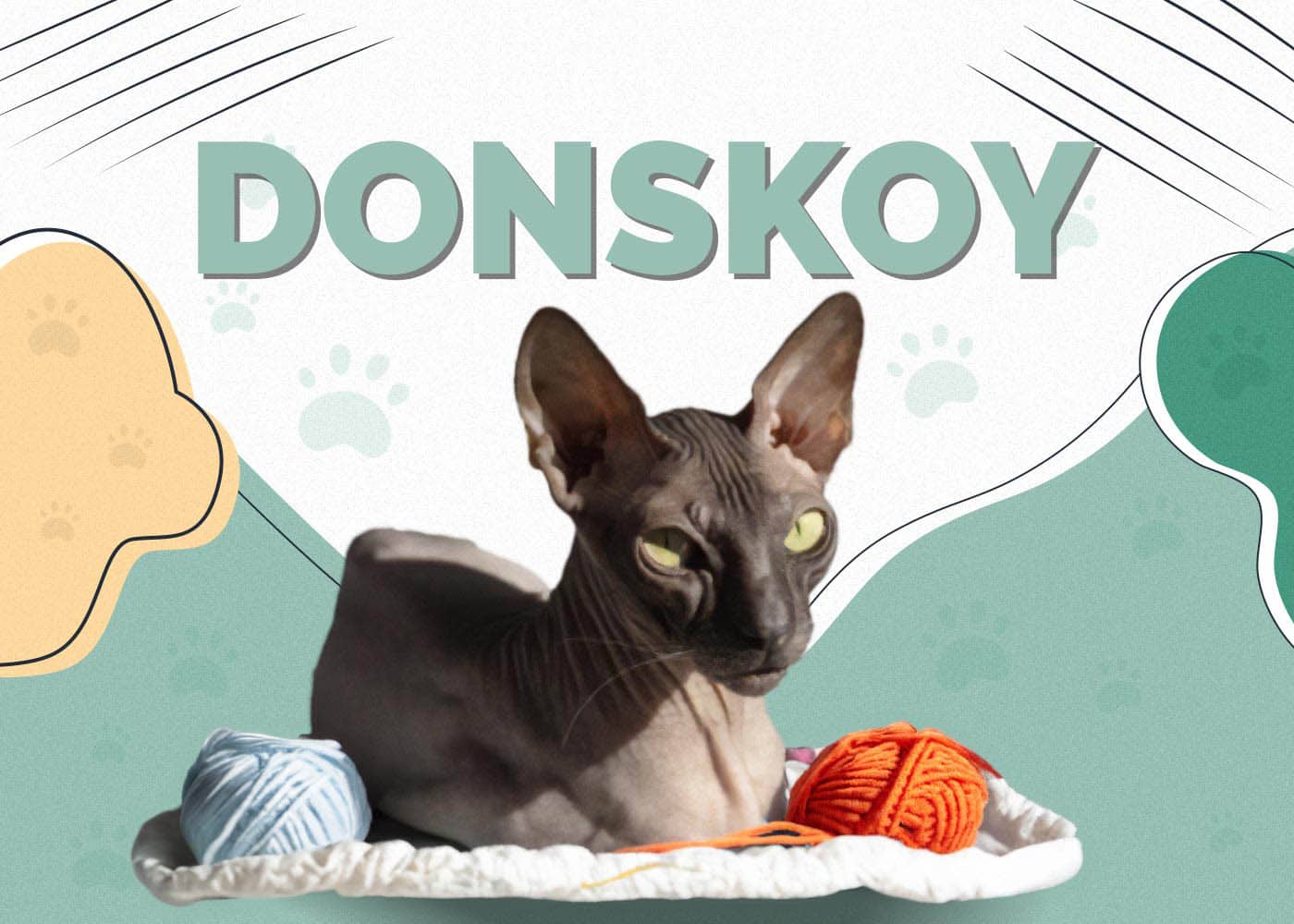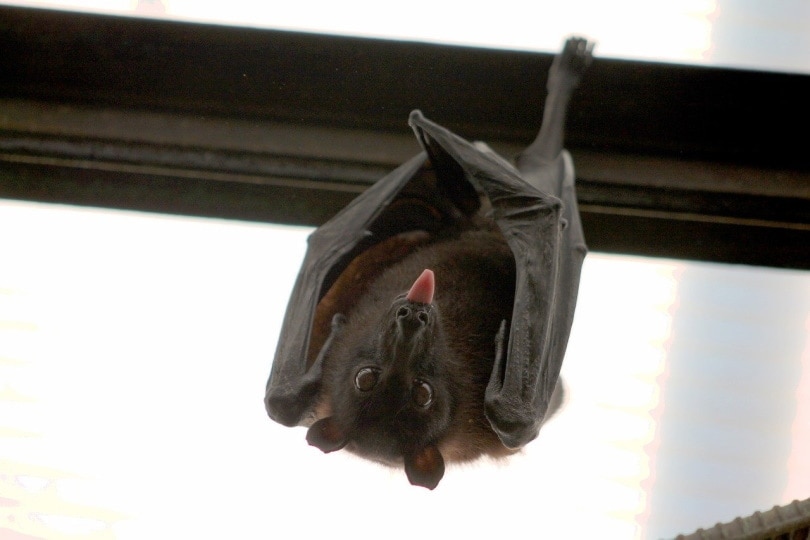Munchkin Bengal Cat: Pictures, Temperament & Traits

Updated on

| Height: | 6–9 inches |
| Weight: | 4–9 pounds |
| Lifespan: | 12–15 years |
| Colors: | Red, orange, brown, marbled, spotted, striped |
| Suitable for: | Families with children, multi-pet households |
| Temperament: | Affectionate, energetic, sociable |
These cats are becoming more popular for their small stature and unique looks, as well as their playful, affectionate personalities. Genetta breeders are working on registration with The International Cat Association and other breeder registries.
Munchkin Bengal Kittens
Munchkin Bengal Cats are somewhat rare, so you may need to search for reputable breeders. They’re unlikely to show up in rescues or shelters, but it’s worth checking to see if you can give an adult a good home.
Temperament & Intelligence of the Munchkin Bengal Cat
Munchkin Bengal cats have excellent temperaments, but they require a lot of attention. Here’s what you need to know about bringing one into your home.
Are These Cats Good for Families? 👪
Munchkin Bengal cats are excellent with children and love spending time with people, making them a great choice for families. They enjoy playing and develop strong attachments to their human companions, especially if they’re socialized at a young age. However, it’s important to teach children to play appropriately with the cat, especially given its small size.
Does This Breed Get Along With Other Pets?
The Munchkin Bengal cat enjoys being around other cats and dogs in the household. They’ll even play and wrestle with playful dogs. But like children, it’s important to supervise play and discourage roughhousing from large dogs that could injure the cat easily with its small size. With small animals, such as rats, mice, hamsters, ferrets, and birds, it’s best to keep them out of the cat’s reach. These are still predatory animals with a high prey drive, and they may stalk or harass a small animal. This can cause stress for both of them. Also, never allow your cat to interact with a small pet that may be perceived as prey.
Things to Know When Owning a Munchkin Bengal Cat:
Wondering what it’s like to care for a Munchkin Bengal cat? Fortunately, they’re similar to caring for other cats. Here are some things you need to know.
Food & Diet Requirements 🐡
Munchkin Bengal cats need high-quality nutrition to support their energy needs. Because of their dwarf stature, it’s important to maintain a healthy weight. Excess weight can put extra pressure on the back and joints. A quality commercial cat food will have all the necessary nutrients your cat needs, including animal-based protein and fat and essential amino acids like taurine. You can choose between dry food or semi-moist food or combine the two to your cat’s liking.
Exercise 🐈
Munchkin Bengal cats are high-energy and need plenty of play and exercise to stave off boredom. They do well with other pets and children, and interactive cat toys can give them enrichment when they’re on their own.
Training 🧶
Bengal cats are intelligent and need plenty of attention and stimulation, which is likely the case with the Munchkin Bengal cat. They can be trained with basic commands and some tricks, like fetch, with patience and discipline. Like other cats, it’s important to use only positive and negative reinforcement (never punishment!) when training your cat.
Grooming ✂️
Munchkin Bengal cats are relatively low maintenance in their grooming needs, just like their parent breeds. They just need to be brushed a few times a week to loosen the hair and reduce the chance of hairballs. Overall, the Bengal is a low-shedding cat, and it’s likely that the Munchkin will also be low-shedding.
Along with brushing, you will need to brush your cat’s teeth and trim its nails regularly. With early training, your cat can be trained to tolerate both grooming tasks well, or you can use a groomer. Cat scratching posts or pads can help your cat keep its own nails short and tidy as well.
Health and Conditions 🏥
Like dwarf dogs, Munchkin Bengal cats are more prone to lordosis, an inward curve of the lumbar spine (swayback), which may affect the cat’s ability to move comfortably. They may also have pectus excavatum, which is when they suffer from a deformity in the center of their chest at birth.
Munchkin Bengal cats may have genetic health conditions that are common in the parent breeds, such as hypertrophic cardiomyopathy, a disease of the heart muscle itself, and progressive retinal atrophy, a condition in which the eyes deteriorate and lead to blindness.
- Fleas, ticks, and parasites
- Asthma
- Lordosis
- Pectus excavatum
- Hypertrophic cardiomyopathy
- Progressive retinal atrophy
- Feline lower urinary tract disease
- Cancers
Male vs Female
Male and female Munchkin Bengal cats are similar in size and personality, so choosing between them comes down to your personal preference. Spaying female cats may be a little more expensive, but that’s a one-time cost. Whichever sex you choose, your cat should be fixed to avoid behavioral and reproductive problems in the future.
For example, intact male cats may develop behavioral problems like aggression and roaming, and female cats are prone to excessive vocalization during heat cycles. Both sexes are susceptible to reproductive infections and cancers when they’re intact as well, which can be prevented with spaying or neutering at an appropriate age.
3 Little-Known Facts About the Munchkin Bengal Cat
1. They’re Named for the Wizard of Oz Characters
Munchkin cats are named for the munchkin characters in the hit film.
2. All Munchkins Come From Two Dwarf Cats
A Louisiana school teacher found two pregnant dwarf cats beneath her car in the 1980s, and it’s believed that all versions of Munchkin cats trace their lineage back to these original dwarf cats.
3. Their Short Legs Come From a Genetic Mutation
The Munchkin’s short legs come from achondroplasia, a genetic mutation that causes dwarfism.
Final Thoughts
Munchkin Bengal cats are charming, small versions of the popular Bengal cat breed. Their dwarf stature is caused by a genetic mutation, giving them a look like a Dachshund or Corgi. These cats are lovable companions and get along with children, dogs, and other cats, and they love spending time with their human companions. If you’re planning to bring a Munchkin Bengal cat home, remember that these cats don’t like to be left alone and have high activity levels, so be prepared to spend a lot of time playing and interacting with your pint-sized tiger!
Featured Image Credit: Sviatoslav_Shevchenko, Shutterstock










